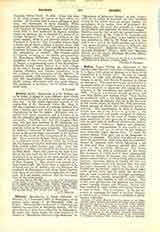

Balboa, VASCO NUÑEZ DE, discoverer of the Pacific Ocean from the west coast of Central America, b. in Spain, 1475, either at Badajoz or at Jerez de los Caballeros; d. at Darien, 1517. He went to Central America in 1500 with Rodrigo de Bastidas and thence, in secret, with Martin Fernandez de Enciso to Cartagena. The story that he got aboard either in an empty barrel or wrapped up in a sail may be true. He soon assumed an important role among the participants of the expedition, and settled Darien in 1509. Then he proclaimed himself governor, and sent both Enciso and Nicuesa away. From Darien he undertook, with a few followers, the hazardous journey across the Isthmus that led to the discovery of the Pacific Ocean, September 25, 1513, and established beyond all doubt the continental nature of America. The appointment in 1514 of Pedrarias Davila (see Pedro Arias De Avila) as governor of the regions discovered and partly occupied by Balboa, and his appearance on the coast of Darien with a large armament, at once gave rise to trouble. Arias was an aged man of mediocre attainments, jealous, deceitful, and vindictive. Balboa was generous, careless, and over-confident in the merits of his achievements, and was no match for the intrigues that forthwith began against him. To mask his sinister designs Arias gave one of his daughters to Balboa in marriage. The latter was allowed to continue his explorations while Arias and the Licentiate Gaspar de Espinosa were slowly tightening a net of true and false testimony around him, under cover of the inevitable Residencia. The Crown gave Balboa the title of Adelantado of the South a, Governor of Coyba and of what subsequently became the district of Panama, but Arias and his agents understood how to reduce these titles to empty honors. Quevedo, Bishop of Castilla del Oro, was Balboa’s sincere friend and assisted him, but with Quevedo’s departure for Spain the case was lost. Fearful lest the bishop’s appeal for his friend might result against Arias and his party, the Residencies was at once converted into criminal proceedings, death sentence hastily pronounced, and Balboa beheaded for high treason in 1517 at Darien. One of the main pretexts for the sentence was Balboa’s action towards Enciso and Nicuesa. Balboa has been credited by most authors with having been first to hear of Peru. This is incorrect. In his few attempts at exploring the coast of southern Panama he heard only of Indian tribes of northern or northwestern Colombia.
AD. F. BANDELIER

